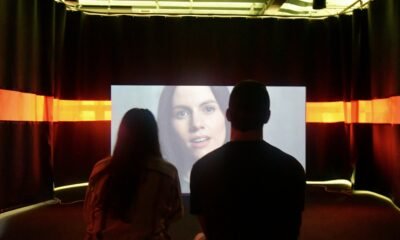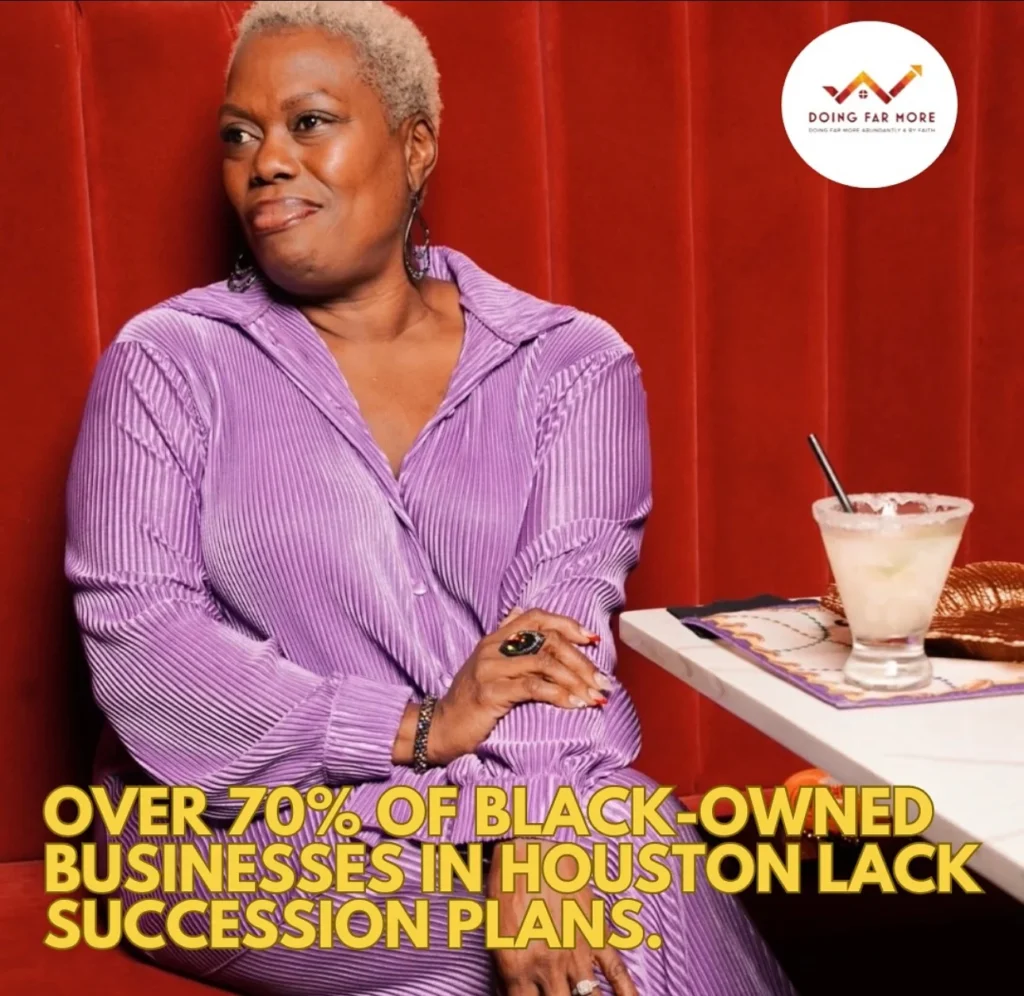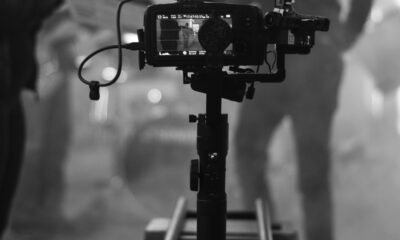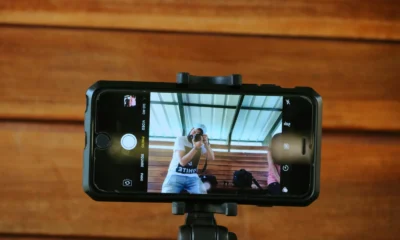Advice
How to grab your audience (5 tips for storytelling)
Crafting a compelling story for a film is a fundamental aspect of filmmaking. It’s like the secret sauce that keeps the audience hooked from the opening scene to the closing credits. It’s about creating a compelling and engaging experience for the audience, using visual and auditory elements to evoke emotions and immerse them in the world of the film. From the scriptwriting stage to the final editing process, every aspect of filmmaking is dedicated to enhancing the storytelling experience. It is through storytelling that filmmakers can transport their audience to new worlds, introduce them to unique characters, and challenge their perspectives. A well-crafted story has the power to evoke emotions, spark imagination, and leave a lasting impression. It allows filmmakers to connect with their viewers on a deeper level, creating a meaningful and immersive experience. Whether it is a gripping drama, a thought-provoking documentary, or an entertaining comedy, storytelling is the key ingredient that brings a film to life and makes it resonate with its audience. It’s the art of creating compelling characters and developing a strong plot that captures the audience’s attention from the beginning and keeps them engaged.

So, let’s sprinkle in some magic and whip up a narrative that’ll captivate and resonate with our viewers, shall we? Let’s dive into the art of storytelling through filmmaking, exploring how to craft individuals that audiences can connect with, how to develop a plot that is the backbone of any compelling film, and how to use visual and auditory elements to evoke emotions and immerse the audience in the world of the film. Let’s learn how to tell a story that not only entertains but also leaves a lasting impact on the viewer, making them think, feel, and reflect.
Now, let’s move on to some practical tips that can help you enhance your storytelling skills in filmmaking:
- Know Your Characters – Characters are the heart of any story. Avoid stereotypes, and try to come up with characters that are original. Give your characters interesting backstories, motivations, and conflicts that drive the narrative forward.
- Develop a Strong Plot – A well-structured plot is essential for keeping the audience engaged. Avoid clichés and generic storylines. Instead, focus on creating a narrative that is both unique and thought-provoking. Weave in unexpected twists and turns that keep the audience on the edge of their seats.
- Embrace Visual Storytelling – Visual storytelling is a powerful tool for conveying emotions and driving the narrative forward. Use cinematography, lighting, and set design to create an immersive world that complements the story. Every visual element should serve a purpose in advancing the plot and evoking specific emotions in the audience.
- Craft Meaningful Dialogue – Dialogue is an integral part of storytelling. Every line should reveal something about the characters or advance the plot. Avoid unnecessary exposition and focus on creating dialogue that feels authentic and true to each character’s voice.
- Create a Compelling Soundtrack – Music has the power to dramatically change the feeling of your film or video. The right soundtrack can enhance emotional moments, build tension, and create a lasting impact on the audience. Choose music that complements the tone and mood of each scene, adding depth and resonance to the overall story.
As you can see, you can make your stories more interesting and keep your audience interested. These tips are really helpful for filmmakers who want to get better at telling stories and make films that people will remember. Incorporating these insights into your work can help you create movies that truly resonate with audiences, leaving a lasting impression and keeping them coming back for more. So, whether you’re just starting out or looking to take your filmmaking to the next level, these practical pointers are like gold dust for making your stories shine on the big screen.
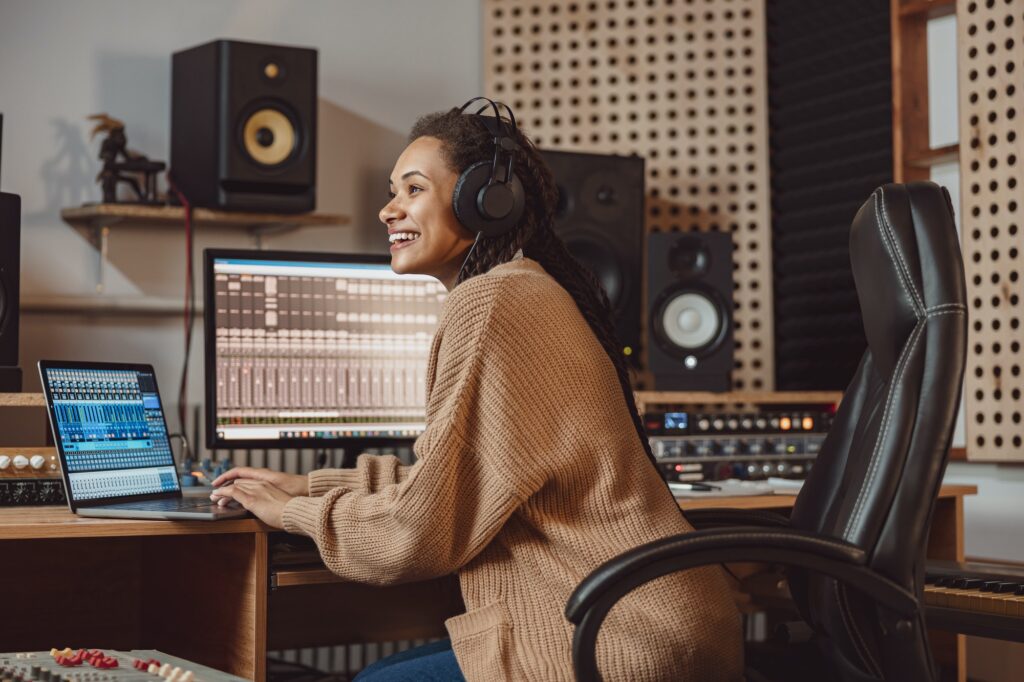
We hope these insights have provided you with a guiding light on your cinematic voyage. Should you find this information valuable and wish to further connect or seek additional guidance, please don’t hesitate to reach out to us at hello@bolanlmedia.com or here. We stand ready to support your creative endeavors and look forward to being a part of your journey in the world of filmmaking. Here’s to your success in crafting stories that inspire and captivate audiences around the globe.
Advice
How to Find Your Voice as a Filmmaker

Every filmmaker aspires to create projects that are not only memorable but also uniquely their own. Finding your creative voice is a journey that requires self-reflection, bold choices, and an unwavering commitment to your vision. Here’s how to uncover your style, take risks, and craft original work that stands out.
1. Discovering Your Voice: Understanding Your Influences
Your unique voice begins with recognizing what inspires you.
- Step 1: Reflect on the themes, genres, or emotions that consistently draw your interest. Are you inspired by human resilience, surreal worlds, or untold histories?
- Step 2: Study the work of filmmakers you admire. Analyze what resonates with you—their use of color, pacing, or narrative techniques.
Tip: Combine what you love with your personal experiences to create a lens that only you can offer.
Example: Wes Anderson’s whimsical, symmetrical worlds stem from his love of classic storytelling and his unique visual style.

Takeaway: Start with what moves you, then add your personal touch.
2. Taking Creative Risks: Experiment and Evolve
To stand out, you must be willing to challenge conventions and explore new territory.
- Experimentation: Try unusual storytelling structures, such as non-linear timelines or silent sequences.
- Collaboration: Work with people outside your usual circle to gain fresh perspectives.
- Feedback: Screen your projects for trusted peers and be open to constructive criticism.
Example: Jordan Peele blended horror with social commentary in Get Out, creating a genre-defying film that captivated audiences.

Takeaway: Risks are an opportunity for growth, even if they don’t always succeed.
3. Telling Original Stories: Start with Authenticity
Original projects resonate when they stem from a place of truth.
- Draw from Experience: Incorporate elements of your own life, culture, or worldview into your stories.
- Explore the “Why”: Ask yourself why this story matters to you and how it connects with your audience.
- Avoid Trends: Focus on timeless narratives rather than chasing current fads.
Example: Greta Gerwig’s Lady Bird was deeply personal, based on her experiences growing up in Sacramento. The film’s authenticity made it universally relatable.

Takeaway: The more personal the story, the more it resonates.
4. Developing Your Style: Consistency Meets Creativity
Style is not just about visuals—it’s how you tell a story across all elements of filmmaking.
- Visual Language: Experiment with colors, lighting, and framing to create a distinct aesthetic.
- Narrative Voice: Develop consistent themes or motifs across your projects.
- Sound Design: Use music, sound effects, and silence to evoke specific emotions.
Example: Quentin Tarantino’s use of dialogue, pop culture references, and bold music choices makes his work instantly recognizable.

Takeaway: Your style should be intentional, evolving as you grow but always recognizable as yours.
5. Staying True to Yourself: Building Confidence in Your Vision
The filmmaking process is full of challenges, but staying true to your voice is essential.
- Stay Authentic: Trust your instincts, even if your ideas seem unconventional.
- Adapt Without Compromise: Be open to feedback but maintain your core vision.
- Celebrate Your Growth: View every project, successful or not, as a stepping stone in your creative journey.
Example: Ava DuVernay shifted from public relations to filmmaking, staying true to her voice in films like Selma and 13th, which focus on social justice.

Takeaway: Your voice evolves with every project, so embrace the process.
Conclusion: From Idea to Screen, Your Voice is Your Superpower
Finding your voice as a filmmaker takes time, courage, and commitment. By exploring your influences, taking risks, and staying true to your perspective, you’ll craft stories that not only stand out but also resonate deeply with your audience.
Bolanle Media is excited to announce our partnership with The Newbie Film Academy to offer comprehensive courses designed specifically for aspiring screenwriters. Whether you’re just starting out or looking to enhance your skills, our resources will provide you with the tools and knowledge needed to succeed in the competitive world of screenwriting. Join us today to unlock your creative potential and take your first steps toward crafting compelling stories that resonate with audiences. Let’s turn your ideas into impactful scripts together!
Advice
Why 20% of Us Are Always Late

Chronic lateness is a common issue that affects approximately 15-20% of individuals, particularly in professional settings. For actors and those in creative fields, the challenges of punctuality can be even more pronounced due to the unpredictable nature of their work. In fact, 62% of creative professionals report struggling with consistent punctuality. Understanding the reasons behind this behavior and implementing practical strategies can help individuals improve their time management skills and enhance their professional reputation.

Understanding the Time Challenge
Many factors contribute to chronic lateness, including poor time perception, personality traits, mental health conditions, and cultural influences. For professionals, especially those in creative industries, the stakes are high. Being late can lead to missed opportunities, damaged relationships, and a negative impact on one’s career trajectory.
Micro-Strategies for Immediate Improvement
To help actors and performance professionals tackle chronic lateness, here are some small, actionable steps that can be easily integrated into daily routines:

For Actors and Performance Professionals
- Pre-Performance Preparation Routine
- Lay Out Your Outfit: Prepare your entire outfit the night before to eliminate last-minute decisions.
- Pack Your Performance Bag: Ensure your audition or performance bag is packed at least two hours prior to leaving.
- Set Multiple Alarms: Use alarms with progressive urgency to ensure you leave on time.
- Create a Travel Buffer: Always calculate travel time with an additional 15-20 minutes as a buffer.
- Digital Time Management Hacks
- Track Your Time: Use apps like RescueTime to monitor how long tasks actually take.
- Implement the “2-Minute Rule”: If a task takes less than two minutes, do it immediately to prevent procrastination.
- Set Location-Based Reminders: Use reminders that activate based on your location for critical appointments.
- Mental Preparation Techniques
- Practice Mindfulness: Engage in a five-minute meditation before leaving to center yourself.
- Visualize Success: Spend a moment visualizing your timely arrival at your destination.
- Reframe Punctuality: View being on time as a form of professional respect rather than an obligation.

Practical Time Optimization Strategies
- Morning Optimization
- Prepare Ahead: Get your coffee ready and lay out your outfit the night before.
- Consistent Wake-Up Time: Establish a regular wake-up time to create routine.
- Create a Morning Buffer Zone: Allow yourself an extra 20 minutes in the morning for unexpected delays.
- Travel Time Calculation
- Add Extra Time: Always add 25% more time to your estimated travel duration.
- Use GPS with Traffic Updates: Rely on real-time traffic updates to adjust your departure time accordingly.
- Have Backup Options: Know alternative transportation methods in case of delays.
Psychological Reframing
Adopting a success mindset around punctuality can significantly impact behavior:
- View being early as a form of professional self-care rather than just an obligation.
- Recognize that tardiness costs more than just minutes; it can affect relationships and opportunities.
- Understand that punctuality is a skill that can be developed over time.
Technology and Tools
- Recommended Apps
- Google Maps: For traffic prediction and navigation.
- Todoist: For effective task management and prioritization.
- Forest App: To enhance focus and track time spent on tasks.
- Professional Time Tracking
- Use digital calendars with built-in buffer times for appointments.
- Set automatic reminders for critical commitments at intervals (30/15/10 minutes prior).
- Color-code appointments by priority to visually manage your schedule.

Accountability Techniques
- Professional Accountability
- Find a “punctuality buddy” within your industry to share goals and support each other.
- Create small rewards for consistent on-time performance to reinforce positive behavior.
- Mental Health Considerations
- Acknowledge the role anxiety plays in procrastination and lateness.
- Seek professional help if time management issues significantly impact your life.
- Practice self-compassion during the improvement process; change takes time.

Statistical Motivation
Understanding the broader implications of punctuality can provide additional motivation:
- Punctual professionals are three times more likely to be considered for promotions.
- Companies lose approximately $3,600 per employee annually due to tardiness.
- Consistent punctuality improves professional reputation by up to 67%.
Final Insights
Punctuality is not merely about being on time; it’s about respect—both for oneself and for others. By implementing these micro-strategies, professionals can transform their relationship with time, reduce stress, and seize new opportunities. Remember, small, consistent changes lead to significant long-term improvements in punctuality and overall professional success.

Every purchase helps us do what we love. Thank you!
Bolanle Media is excited to announce our partnership with The Newbie Film Academy to offer comprehensive courses designed specifically for aspiring screenwriters. Whether you’re just starting out or looking to enhance your skills, our resources will provide you with the tools and knowledge needed to succeed in the competitive world of screenwriting. Join us today to unlock your creative potential and take your first steps toward crafting compelling stories that resonate with audiences. Let’s turn your ideas into impactful scripts together!
Advice
Want to Succeed in Film? Avoid These 8 Common Mistakes!

The film industry is as much about talent as it is about relationships. Whether you’re an actor or a filmmaker, your reputation can precede you, and how you conduct yourself on and off set can significantly impact your career trajectory. While the allure of fame and success might tempt some to cut corners or act out of turn, there are certain unspoken rules that, if broken, can derail even the most promising careers. Here are some key things to avoid—and examples to bring these lessons home.

1. Social Media Is Not Your Golden Ticket
Social media can amplify your presence, but it cannot replace professionalism or genuine connections. Many newcomers mistakenly believe that a strong online following will open all the doors. It won’t.
Example: Imagine taking a photo on set without permission to post on Instagram. Not only could this violate a non-disclosure agreement (NDA), but it could also lead to immediate dismissal. A real-life case involved someone snapping a selfie with Dwayne “The Rock” Johnson while he was preparing for a scene. Though Johnson obliged, the individual was escorted off set and blacklisted from future work. Always respect NDAs and avoid sharing anything without explicit approval.
2. Gratitude Goes Further Than You Think
A simple “thank you” can leave a lasting impression in an industry where egos often clash. Showing appreciation for everyone—from the director to the crew—can set you apart as someone people want to work with.
Example: The crew often arrives hours before actors and stays long after they leave. Acknowledging their hard work with something as simple as a thank-you note, verbal appreciation or an online business review can foster goodwill. On one production, an actor who consistently thanked the crew was recommended for another project simply because they were seen as respectful and easy to work with.

3. Respect the Hierarchy and Processes
Film sets are highly structured environments where every role matters. Overstepping boundaries—whether by touching equipment, offering unsolicited advice, or cutting yourself mid-scene—can disrupt production and damage your reputation.
Example: Only the director calls “cut,” even if you flub a line or trip during a take. One actor who stopped mid-scene because they felt they’d messed up inadvertently ruined what could have been a usable shot. Directors value actors who trust their process and keep going until told otherwise.

4. Don’t Treat Sets Like Networking Events
While networking is crucial in the film industry, doing so on set is one of the quickest ways to alienate yourself. Sets are workplaces, not social gatherings.
Example: A production assistant once tried pitching a script idea to a director during lunch on set, only to be reprimanded for being unprofessional. Ironically, the best way to network is by doing your job well and letting your work speak for itself. Genuine connections will naturally follow when people see you as reliable and talented.

5. Respect Everyone’s Space and Process
Every individual on set has their own way of working, especially actors who may have unique methods of preparing for their roles. Disrupting someone’s process can create unnecessary tension.
Example: If another actor prefers staying in character between takes while you like chatting, give them space. Asking about their preferences beforehand shows respect and fosters collaboration.
6. Be Punctual and Professional
Being late or unprepared doesn’t just reflect poorly on you—it delays everyone else’s work too. Treat every call time as sacred.
Example: One actor who consistently arrived late not only frustrated the crew but also cost the production extra money due to delays. In contrast, those who show up early demonstrate reliability and commitment, making them more likely to be rehired.
7. Appreciate Those Who Invest in You
Producers, brands, and businesses that invest resources into your career deserve recognition—not exploitation. They’re taking risks on you; show them you’re worth it.
Example: An actor who publicly thanked a sponsor during an awards speech secured additional endorsements because they demonstrated gratitude. On the flip side, failing to acknowledge these contributions can make you seem entitled or ungrateful.

8. Avoid Complaining at All Costs
Film sets are high-pressure environments where everyone faces challenges. Complaining about long hours or minor inconveniences will only make you seem unprofessional.
Example: If your call time is 6 AM but the crew has been there since 4 AM setting up lights and cameras, complaining about being tired won’t win you any sympathy. Instead, focus on maintaining a positive attitude—it’s contagious and appreciated by everyone around you.
Final Thoughts: Build Bridges, Don’t Burn Them
The film industry thrives on collaboration and mutual respect. Your talent might get you through the door, but your behavior will determine whether you stay inside or get shown out. By avoiding these common pitfalls—like overstepping boundaries, neglecting gratitude, or treating sets like social media fodder—you’ll build a reputation as someone people want to work with repeatedly.
Remember: In Hollywood (and beyond), your reputation is your currency. Treat it wisely!
Bolanle Media is excited to announce our partnership with The Newbie Film Academy to offer comprehensive courses designed specifically for aspiring screenwriters. Whether you’re just starting out or looking to enhance your skills, our resources will provide you with the tools and knowledge needed to succeed in the competitive world of screenwriting. Join us today to unlock your creative potential and take your first steps toward crafting compelling stories that resonate with audiences. Let’s turn your ideas into impactful scripts together!

 Advice1 week ago
Advice1 week agoWhat SXSW 2025 Filmmakers Want Every New Director to Know

 Film Industry2 weeks ago
Film Industry2 weeks agoFilming Yourself and Look Cinematic

 Politics3 weeks ago
Politics3 weeks agoBolanle Newsroom Brief: Israel Strikes Iran’s Nuclear Sites — What It Means for the World

 News5 days ago
News5 days agoFather Leaps Overboard to Save Daughter on Disney Dream Cruise

 Advice1 week ago
Advice1 week agoWhy 20% of Us Are Always Late

 Health4 days ago
Health4 days agoMcCullough Alleges Government Hid COVID Vaccine Side Effects

 Entertainment3 weeks ago
Entertainment3 weeks agoThe Hidden Reality Behind Victoria’s Secret

 Advice1 week ago
Advice1 week agoHow to Find Your Voice as a Filmmaker











